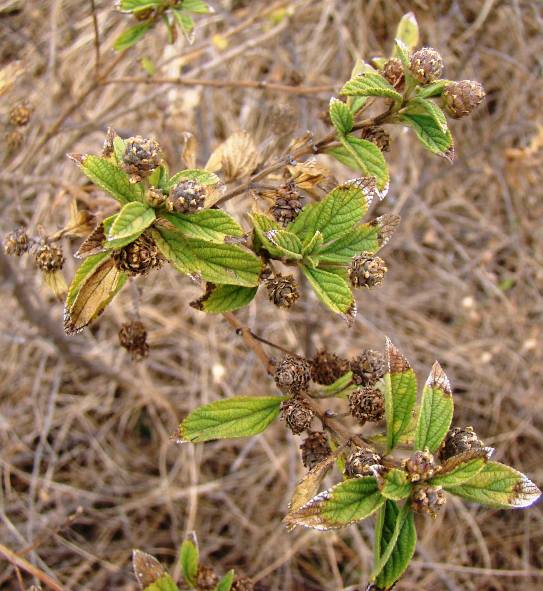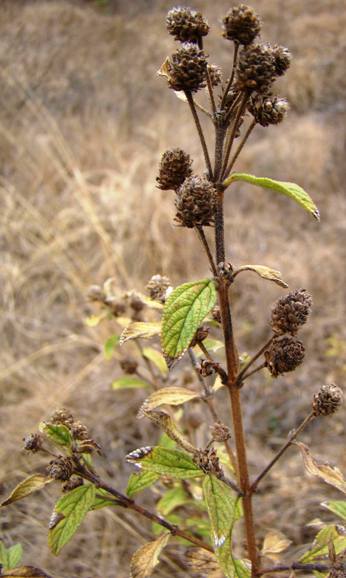|
Botanical name |
Lippia javanica |
|
Other names |
Fever tea; beukesbossie; zinziba; koseret |
|
Family |
Verbenaceae |
|
Dimensions |
A woody, aromatic shrub, usually reaching about 0,6 m in height |
|
Description of stem |
Much branched from ground level; yellowish cream to light brown longitudinally fissured stems |
|
Description of leaves |
Simple, opposite or whorled in 3's; rough with conspicuous net-veining, indented on the upper surface; rough to the touch on both surfaces; margin dentate; a pungent, rather pleasant fragrance reminding of verbena or lemon emanate from crushed leaves, even when dry |
|
Description of flowers |
Small white flowers in rounded teminal and axillary clustered spikes, appearing in summer and autumn |
|
Desciption of seed/fruit |
Small, inconspicuous and dry |
|
Description of roots |
|
|
Variation |
Analysis has shown the chemistry to be varied across plant populations |
|
Propagation and cultivation |
From seed or cuttings |
|
Tolerances |
Sometimes associated with disturbed areas and decreasing vegetation |
|
Uses |
Used as a potpourri for cupboard freshening; more a herb garden prospect than for flower gardens; steam distillation has yielded a useful essential oil; used in skin lotions and aqueous cream; leaf smoke used in treating coughs, bronchitis and asthma; leaves used to treat skin irritations, including those occurring in AIDS patients; a mosquito repellent |
|
Ecological rarity |
Common and hardy |
|
Pests and diseases |
|
|
Other |
|
|
Location |
Bushveld, river embankments, forest edges and grassland |
|
Distribution (SA provinces) |
Gauteng, Limpopo, Northwest, Free State, Kwazulu-Natal |
|
Country |
South Africa, Zimbabwe, Botswana, Swaziland, Zimbabwe, Zambia, and many central African countries up to Ethiopia |

